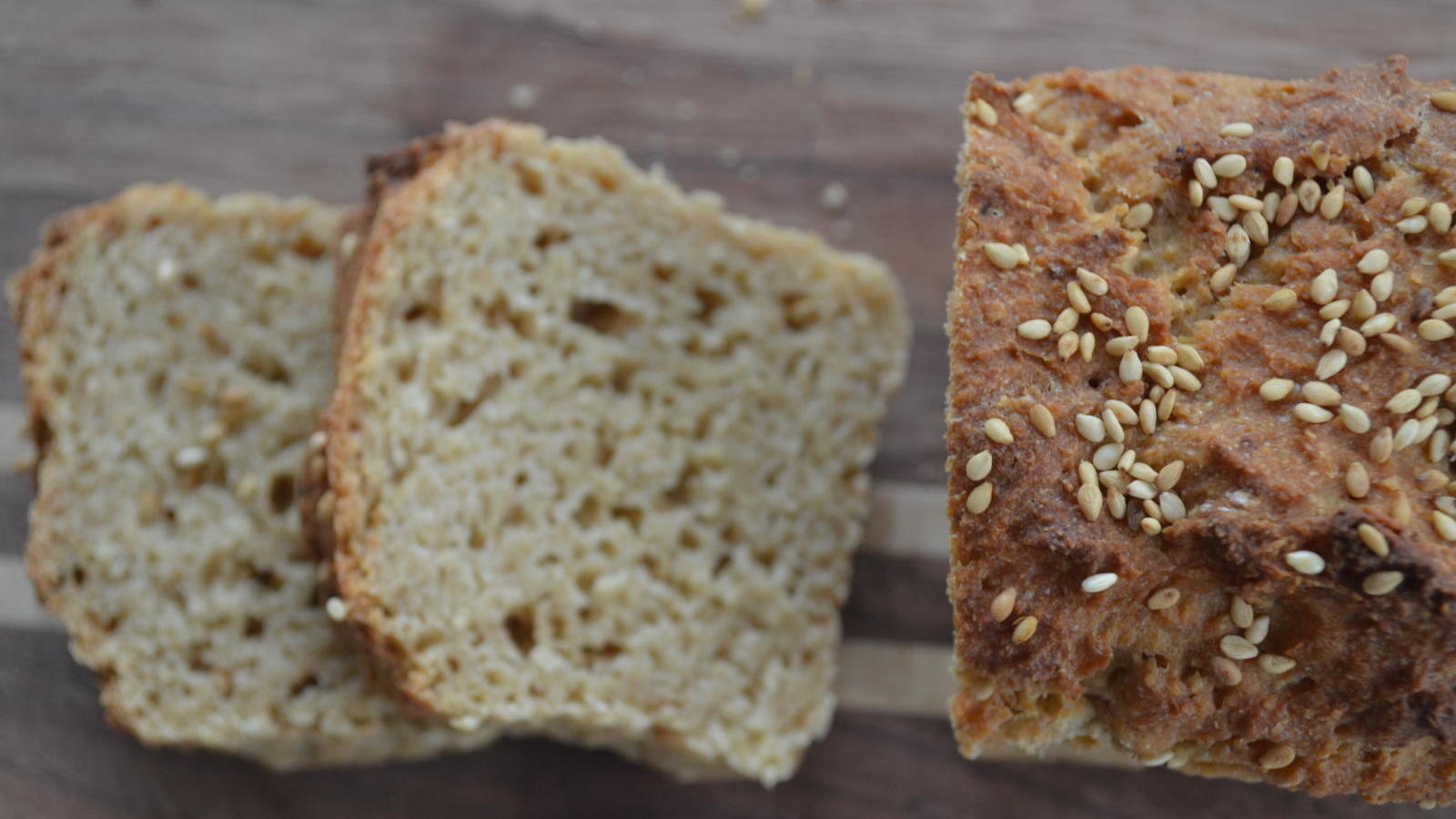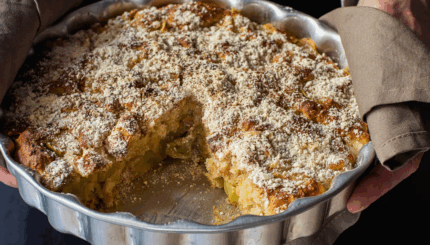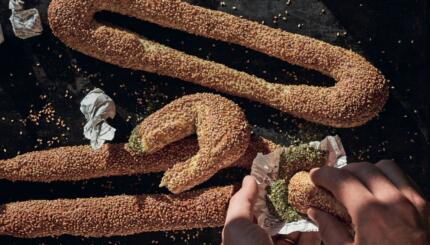For more challah recipes, click here!
The first bread I ever learned to bake was challah. My grandmother was a rebbetzin (rabbi’s wife) famous for her glorious displays of baked goods, including challah. Once I started baking myself, my favorite time of the week was Shabbat dinner, when we’d lift the cover to reveal my braided loaves. We would all sigh, stomachs rumbling.
After a year of exploring the wonderful world of baking bread, my one-woman gluten fest came to a rather rude end. I’d been ignoring my chronic stomach pains and bloating, and though I tested negative for celiac, I decided to try a gluten-free diet just to see.
For more gluten-free recipes, click here!
The Nosher celebrates the traditions and recipes that have brought Jews together for centuries. Donate today to keep The Nosher's stories and recipes accessible to all.
Both to my dismay and relief, my pains subsided, my energy level increased, and I began to feel more like myself again. I swore off bread and wallowed in self-pity until I took a shot at baking gluten-free bread. I soon discovered wonderful and tasty gluten-free flours, some made from grains I’d never even heard of.
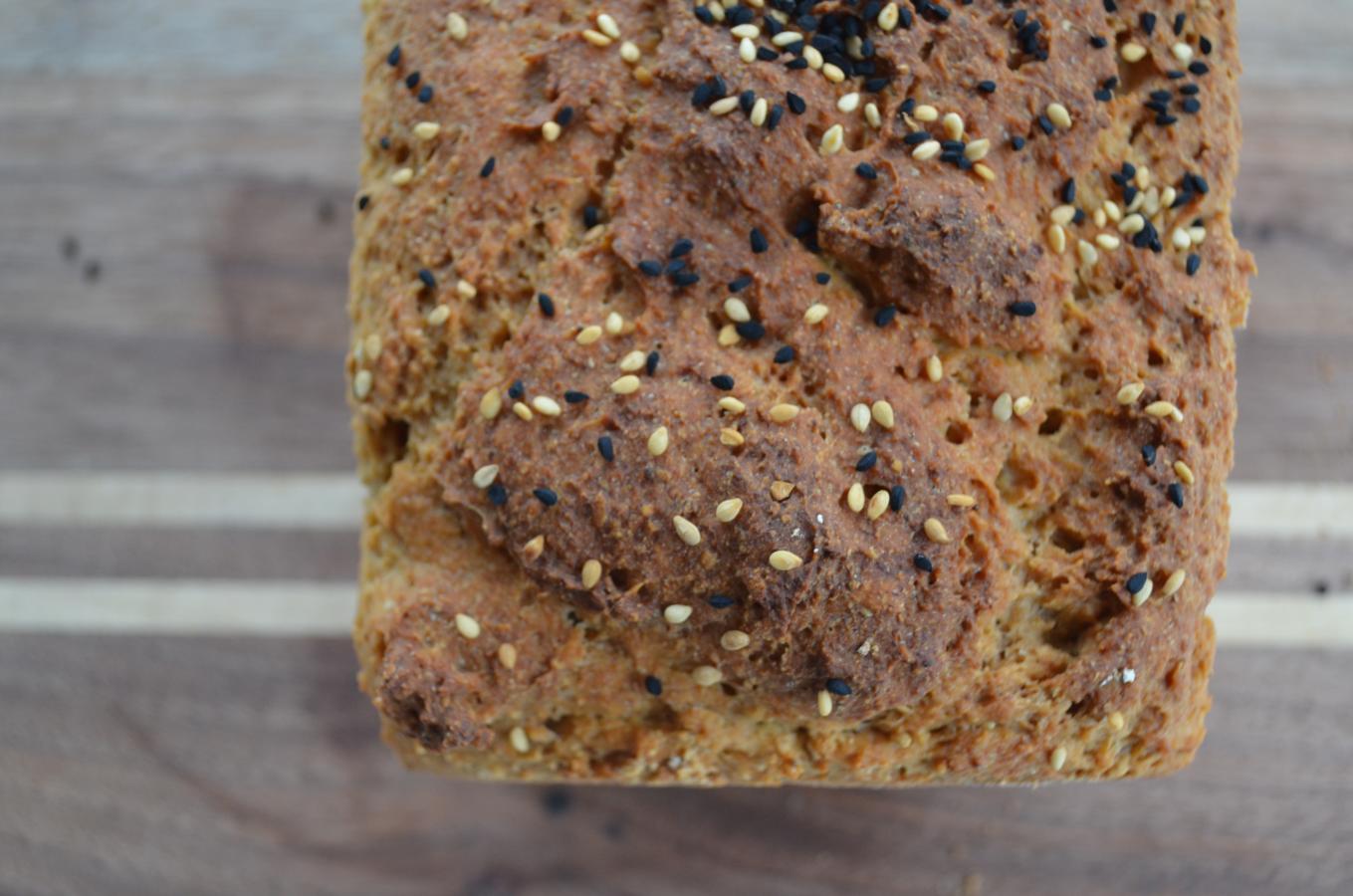
After crafting this basic gluten-free bread recipe, I went off to create a challah recipe that would make my grandmother proud and would even be worthy of hamotzi (the blessing made before eating bread) and hafrashat challah, the blessing over separating and ritually burning a small piece of bread, also known as “taking challah.” (See “Challah Back,” my rabbinic source sheet all about challah baking!)
According to Jewish law, challah can only be “taken” if made from one of the five grains named in the Bible: barley, rye, wheat, oat, spelt. Bread made from other grains can be kosher, but you cannot say hamotzi over it, nor can you take challah from it.
Guess what? Those five grains are the grains that gluten-free eaters avoid. Oats, however, can be gluten-free if grown, harvested, and processed away from wheat.* A rabbi I consulted suggested that while no teshuva, or responsum, has been written on the topic, the oat flour must be at least 51 percent of the flour in the bread.
Gluten–free bread dough is usually a similar texture to cake batter, which is not braidable. I have this braided loaf pan, which gives the bread a beautiful braided look. I also occasionally bake it in a loaf pan as well and I actually prefer that crust over the braided pan loaf – and I love decorating with different seeds!
Ingredients
- 1 1/4 cups warm water
- 1 package dry yeast (2 1/4 tsp)
- 1/4 cup honey (85 grams)
- 2 eggs (egg-free version: 2 tbsp. flax seeds blended with 6 tbsp warm water until frothy)
- 1/4 cup (50 grams) grapeseed or other vegetable oil
- 1 tsp cider vinegar
- 1 Tbsp sea salt
- 1 Tbsp psyllium husk powder
- 1 tsp xanthan gum
- 150 grams tapioca starch/flour
- 200 grams gluten free oat flour (many brands available, including Bob's Red Mill and Cream Hill Estates)
- 45 grams sorghum flour
- 30 grams rice flour
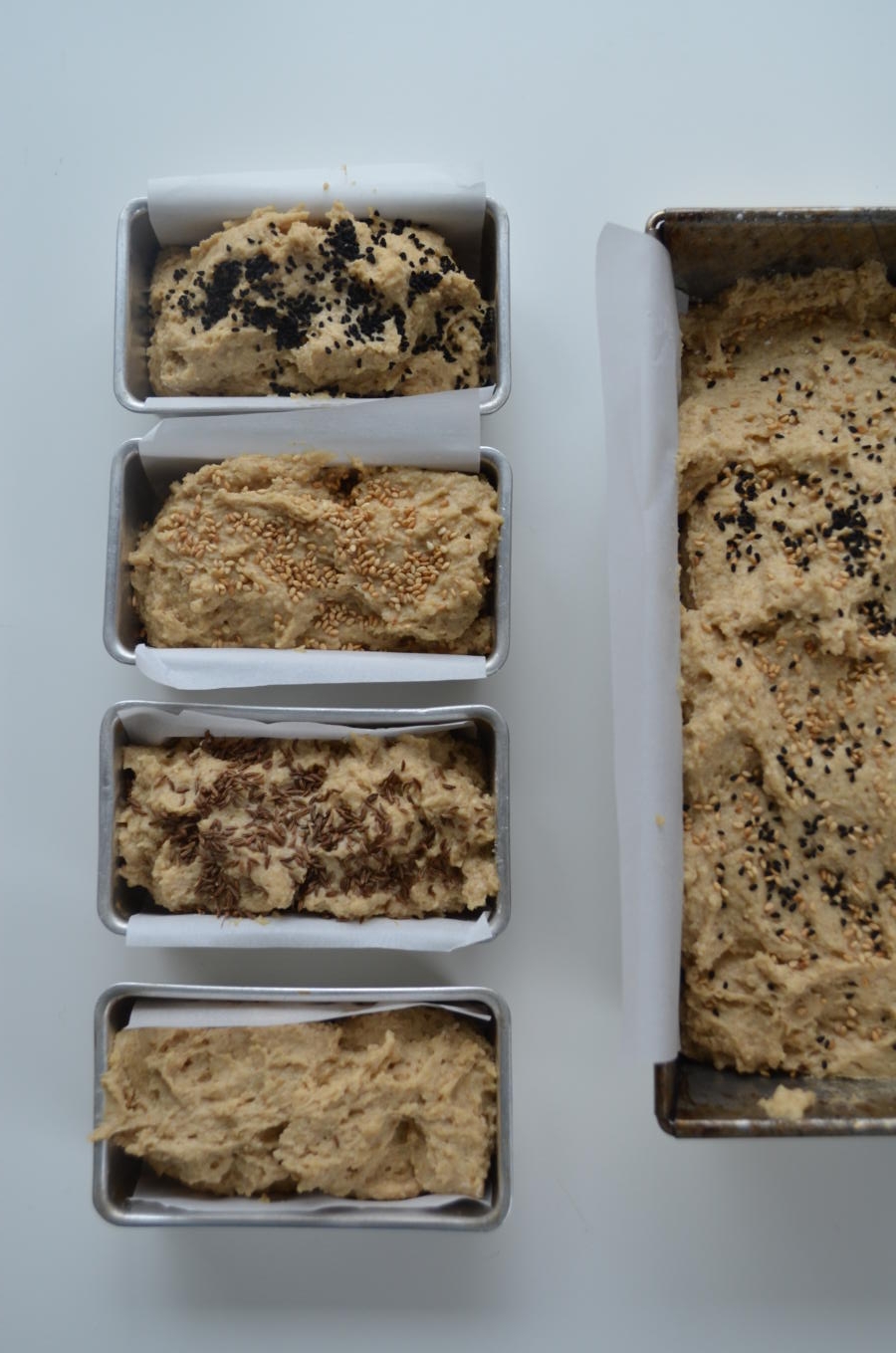
Directions
Place the yeast and honey in the bottom of the bowl. Cover with the warm water and whisk for 30 seconds to dissolve the yeast.
Let the yeast foam and bubble for a few minutes. Mix in wet ingredients first (eggs, oil, vinegar) and then add the flours, salt, and xanthan gum and psyllium husks. Mix well. Add raisins if you like. Pour into a lightly oiled 9×5 loaf pan and smooth the top. Cover with a clean dishtowel and let rise for 1 1/2 to 2 hours.
15 minutes before it’s finished rising, preheat the oven to 375 degrees. Remove the dishtowel and bake until golden brown, about 40 to 45 minutes. Let it cool for a few minutes out of the oven in the pan before removing. Turn it out onto a cooling rack and let cool 30 minutes before slicing.
Gluten-free bread dough is usually a similar texture to cake batter, which is not braidable. I have this braided loaf pan to trick people into thinking I actually braided this challah. But any loaf pan will do!
*Note: There are some celiacs who cannot digest oats, so I realize this recipe will not work for those folks.
Love Jewish food? Sign up for our weekly Nosher recipe newsletter!
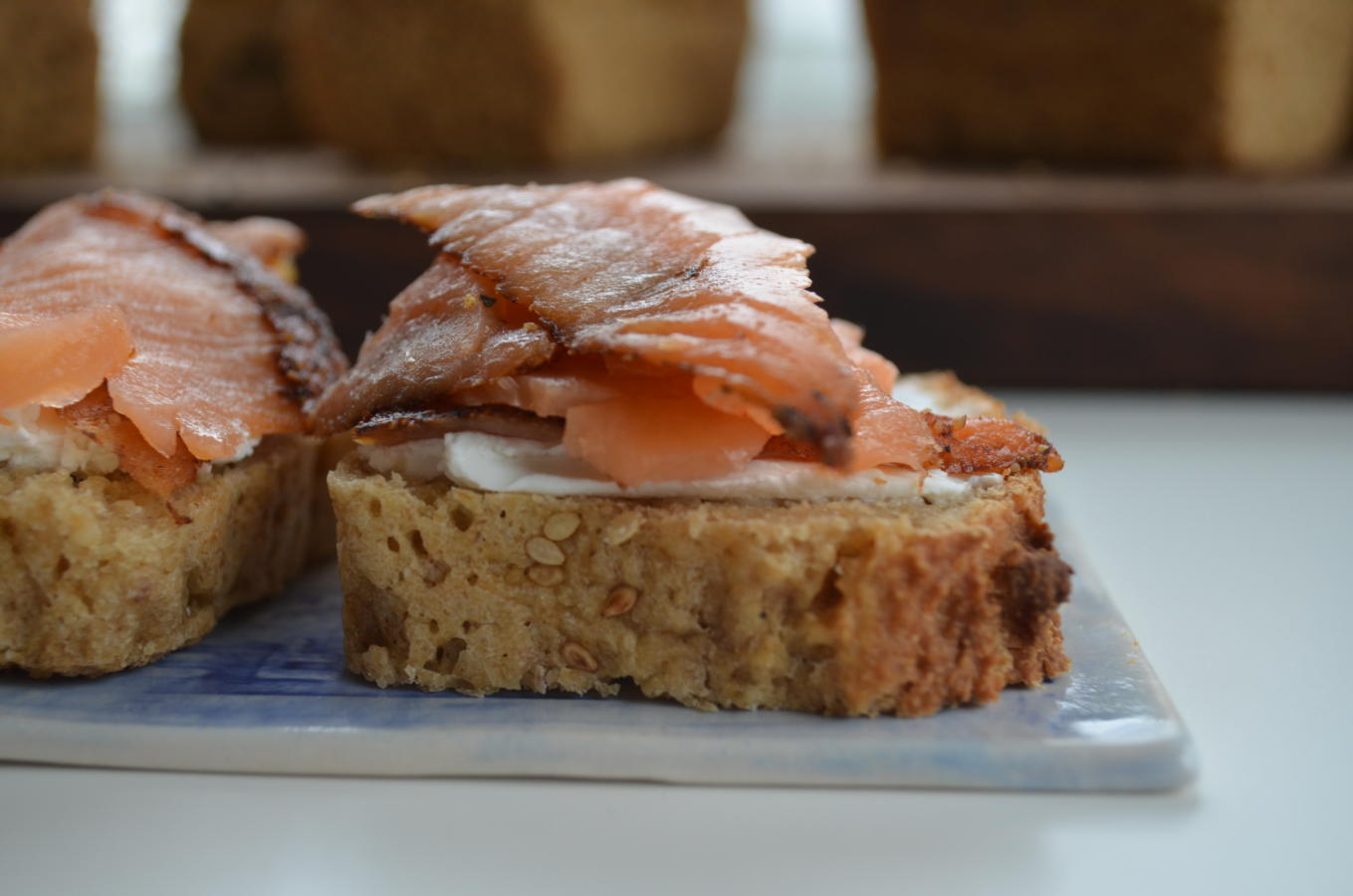
challah
Pronounced: KHAH-luh, Origin: Hebrew, ceremonial bread eaten on Shabbat and Jewish holidays.
Shabbat
Pronounced: shuh-BAHT or shah-BAHT, Origin: Hebrew, the Sabbath, from sundown Friday to sundown Saturday.
